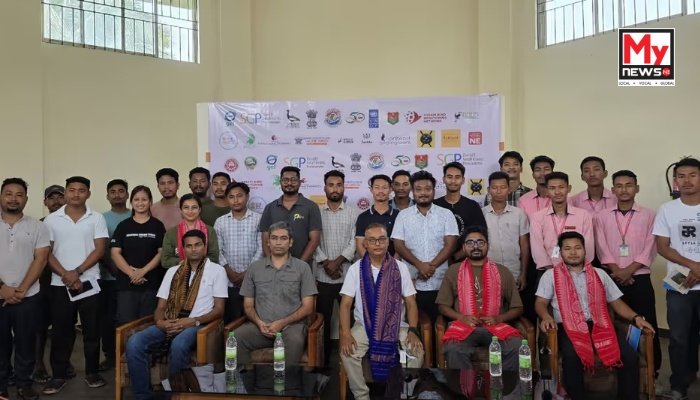Assam: Rare Florican Conservation Takes Root in Koklabari
Koklabari, Assam — A vital three-day conservation initiative for the critically endangered Bengal Florican commenced on May 21st, transforming the landscape of local environmental efforts. This collaborative program, spearheaded by the Manas Maozigendri Eco-Tourism Society (MMES) in conjunction with the Assam Bird Monitoring Network and Assam’s Forest Department, aims to secure the future of this elusive grassland dweller.
The inaugural day saw an convergence of experts, engaging in profound discussions on the Bengal Florican’s ecological significance and outlining innovative strategies for precise population monitoring. The urgency of their mission resonated through the initial sessions, setting a purposeful tone for the days ahead.
Mahendra Basumatary, President of MMES, shed light on the unique history of the Koklabari Agricultural Farm. Once a government seed research facility, this sprawling 9 sq km area is now under the diligent stewardship of locals from nine villages, dedicated to traditional paddy cultivation. Remarkably, this community-run farm has become an unexpected sanctuary for the Bengal Florican, housing approximately a dozen individuals within its non-protected boundaries.
The Bengal Florican’s specific habitat requirements—grasslands with particular vegetation heights—make Koklabari’s community-run paddy fields an unusual yet remarkably effective example of harmonious coexistence between agriculture and wildlife preservation. This symbiotic relationship offers a fresh perspective on conservation in non-traditional settings.
Tomal Gogoi, Project Manager for the initiative, underscored the immediate imperative for action. “The Bengal Florican is not merely a bird we’re striving to protect—it represents the health of our grassland ecosystems. With fewer than 1,000 individuals remaining worldwide, the onus is on us, especially in regions like Assam, to lead the charge,” Gogoi asserted, highlighting Assam’s critical role in global conservation efforts.
He further elaborated on the program’s community-centric philosophy, which seamlessly integrates florican-friendly farming practices, sustainable vermicomposting, and responsible grazing techniques. This holistic approach is designed to both safeguard the species and bolster local livelihoods, recognizing that the well-being of one is intrinsically linked to the other.
Gogoi added, “True success is measured not just in numbers, but in mindset shifts when locals view the Bengal Florican as part of their shared natural heritage, worthy of protection.” This emphasis on fostering a deep-seated connection between the community and the bird species reflects a long-term vision for sustainable conservation.
The program will continue for two more days, culminating in a crucial field-based bird count activity at the Koklabari Agricultural Farm, a recognized key breeding ground for the Bengal Florican. This hands-on assessment will provide invaluable data for future conservation strategies.
Notable participants in the program include Vivekananda Pathak, Deputy Field Director of Manas National Park and Tiger Reserve; the Bhuyanpara Range Officer; Anurudha Chakraborty from The Assam Royal Global University; and Thulunga Baro, Teacher in Charge at Koklabari Chapaguri College, all contributing their expertise to this vital conservation endeavor.
Read More: Tottenham Breaks Drought, Claims Europa League Title

